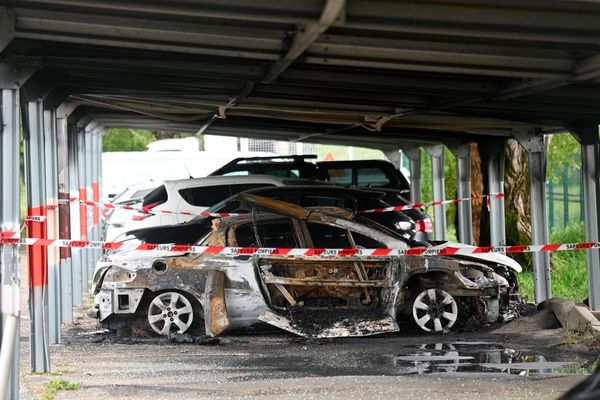Like many first home buyers, Georgia's priority was price and location — it's only incidental her new home is souped-up with technology that's yet to hit the market and innovations that will save her thousands.
The 25-year-old is the second person to move into Carseldine Village in Brisbane's north, with her home so advanced it is being studied as a "living laboratory".
Construction is still underway for the bulk of the 182-home development, but it will soon become the nation's first freehold neighbourhood that will be 100 per cent solar and battery operated.
While that in itself is novel, Georgia's home is one of the smartest in the country.
Her home is on the cutting edge of pre-cooling technology, which will slash carbon emission and energy costs, while lessening the load on the grid for the evening peak.
The air-conditioner in the home can talk to the electricity grid and will be geared up to allow automated pre-cooling — yet to be seen in Australia.
Even Georgia's showering habits are memorised by the home's app, so that in winter or when there isn't much solar, her battery is charged at the lowest price.
It is estimated that Georgia's home will have net-zero energy emissions and she'll save at least $1,600 a year on electricity.
Since moving in in May, Georgia said she has found herself addicted to tracking her solar through her mobile phone app.
A power bill hasn't come in yet, but she believes it will be $100 for the quarter and that is just for the "daily usage charge" for being connected to the grid.
"I work in infrastructure and we do a lot of work on net-zero developments," she said.
"It's pretty cool to be able to say to my colleagues 'my house is off the grid'.
"We didn't have to do anything. It was all included as part of the build package."
Living laboratory
Georgia and 24 other home owners in the development are part of a separate pilot program to see if they could save even more energy and money by using a Home Energy Management System.
The system, developed by the CSIRO, is cloud based and can communicate with Georgia's solar, battery, air conditioning and the power grid.
It means she can automate her energy supply and output through her mobile phone, to make the most of daytime solar and take advantage of cheaper electricity tariffs.
In addition, the electricity generator can communicate with her appliances to pre-cool her home or turn off her air-conditioner if there is a risk of a blackout.
Proving mass 'net zero' living is possible
Georgia bought the two-storey terrace, on a 167m2 block, because at $530,000 it was between $70,000 and $120,000 cheaper than comparable homes she was looking at.
The Village is the brainchild of state government's Economic Development Queensland (EDQ), who set out to prove that net-zero energy emission living was not only achievable, but affordable to everyone, including first home buyers.
EDQ project manager Brooke Walters said owners could save $1,600 a year on power bills, but that figure was calculated before power prices rose and does not take into account the software platform.
Ms Walters said they estimated the platform could save the home owner an additional 27 per cent, but that figure would need to be substantiated through a long-term study.
"It's not just solar and battery, but by having the freehold titled homes and no body corporate, we estimated that over the next 10 years, people should save about $30,000," she said.
"This is a demonstration that it can be done. This is the future. Each home saves about 5 tonnes of carbon emissions per year."
Air-conditioning of the future
The 25 homes that use the software platform also have an air-conditioner that is yet to hit the market.
The air conditioner has a prototype cloud-based controller system, flown in from Japan, that can communicate with the system's cloud and Energex.
The components have only been used in commercial air conditioning and is a global first for use in homes.
The system can predict the external weather, knows the internal temperature and the available solar and battery energy. From this set of data, it can be automated to pre-cool homes earlier in the day when solar energy is in abundance,
This reduces costs for the householder and demand on the electricity grid during the afternoon and evening peaks.
"Being a prototype, the features and specifications of the current hardware requires further refinement to make it cost effective and include it in the outdoor unit and that will take time to develop," Ms Walters said.
"This is pure research and development.
"But this is the future of air-conditioning. I don't know how many years it will be, maybe it will five years."
Research into brown outs
The technology allows the energy network to send signals via the internet to turn down the air-conditioners if there is an energy crisis.
During the study, different scenarios will be trialled in which a signal will be sent to the cloud requiring the homes to export energy from their solar battery. The energy company can then understand the demand put on the grid and make better decisions to ensure a reliable and cost-effective supply of power.
"It's like a power station going down, or a substation going down, having the ability to respond with emergency generation from people's homes," Ms Walters said.
"That's the future, where you can draw on multiple sources or storage and generation, with householders rewarded financially.
"It could avoid brown outs or potential blackouts."
Queensland University of Technology associate professor Wendy Miller will oversee the study for the next two years.
She wants to determine the difference between having efficient appliances, solar and battery, as well as how much energy is saved through the use of a home management system.
QUT will measure how much solar Georgia and the other participants generate, how much energy they use for the hot water system, air conditioning and how much their battery gets charged and discharged.
"This has never been done before," she said.
"If at a household level, we can try to maximise households to have just enough solar to meet all of their load, even during the daytime, it saves an over supply of solar in the middle of the day."
Vantage Homes is one of two companies working on the project.
General manager Matthew Burness said the home's added insulation and energy efficient glazing has meant they outperform the 7-star home energy rating.
"The houses are affordable, that's also due to the small lot terraced housing, and prior planning and implementation of 100 per cent solar," he said.
"So you get some economy of scale and good supply pricing, and then also putting in provisions like the EV charger which isn't a huge cost when it's done at the construction phase.
"They are trying to push the boundaries on what is the standard in the future."







